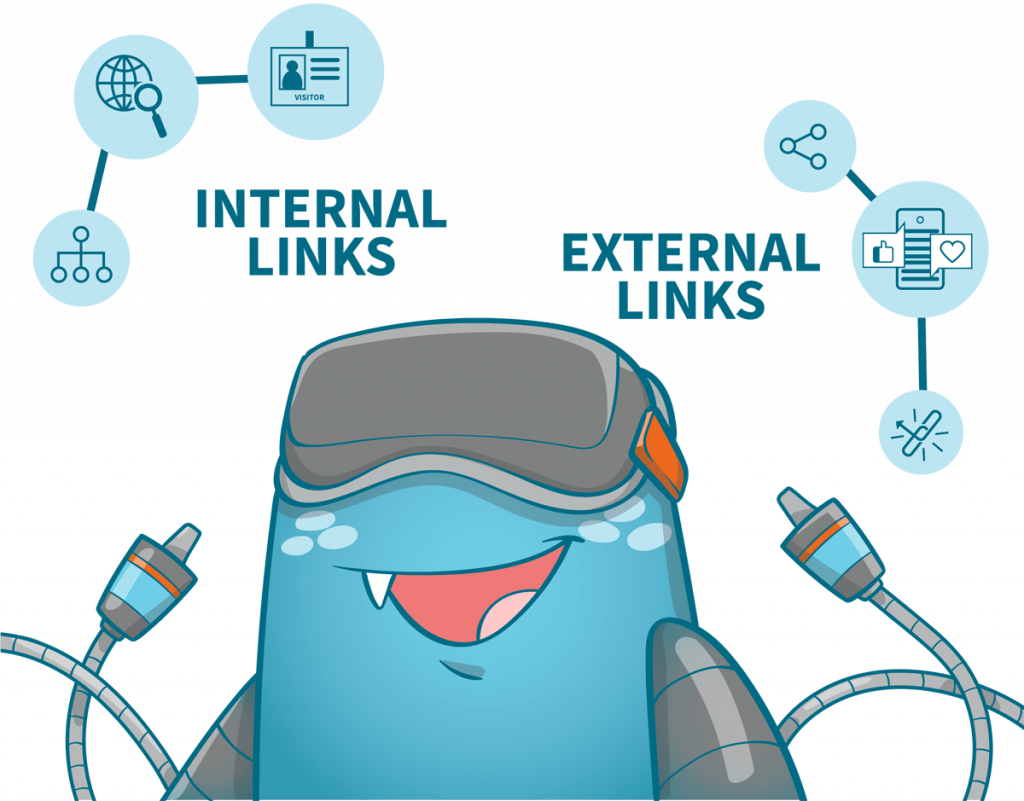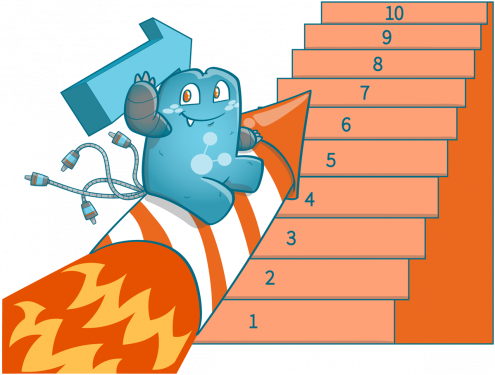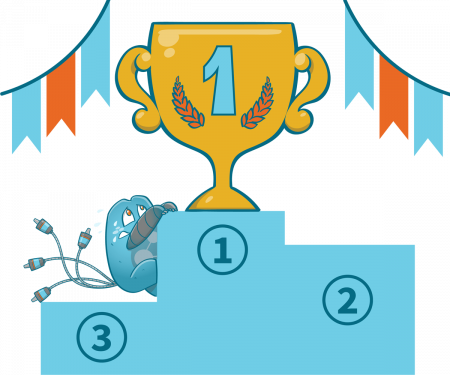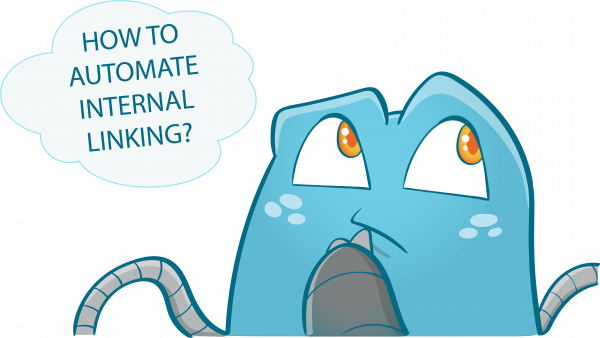5 Considerations when Building an Excellent Internal Linking Structure

Internal linking structures are a vital part of any website’s SEO strategy. The structure of your internal links can significantly impact how well your site ranks in the search engines, and consequently, how much traffic it gets.
In this article, we will discuss what an ideal internal linking structure looks like and offer some best practices for creating one that is crawlable by Googlebot.
What are internal links?
Internal links are links from a page of a website to another page of the same website. Users and search engines utilize links to look for relevant content on your website. Links also aid web visitors to navigate your site, especially when looking for specific content- the same purpose why search engines use links. Both web visitors and search engines cannot find a page if links are not visible.
There are some types of internal links. Aside from the links on your homepage, menu, post feed, and others, you can also attach links in your content- this is called contextual links.
Contextual links lead visitors to contents of significance and relevance. Also, they help search engines look for related content on your site and determine the value of those contents. Thus, good internal links are necessary to your SEO because the more links an important page receives, the more important it will seem to search engines.
Internal Links Vs External Links
Each website consists of internal and external links. External links are hyperlinks that lead to any domain other than the domain the link exists in. On the other hand, internal links are links of the same domain. The following are some of the characteristics of an external link and an internal link:

Internal links
- Increase the chance of visitors to stay on your site
- Add structure for your website
- Help search engines understand your website
External links
- Create a guest post for other websites that will link back to your website
- Create great content that people will share and link to
- Provide convenience to users to share your content on social media
Internal Linking Structure: An Overview
Internal link structure, also referred to as internal linking architecture, is the way in which internal links are organized on a website.
Creating an effective internal linking structure is fundamental to ensuring that Google can crawl your site effectively. That is why it’s also something you should pay attention to if you want your users to easily navigate around your site once they get there.
Best Practices For Internal Link Structure An ideal internal linking structure has three key characteristics:
- It provides context for each piece of content by clearly defining what topic(s) the page covers within the overall scope of the website. This helps ensure that search engines have enough information about where all pages fit into the “bigger picture.” Hence, they understand how important these pages are relative to one another and better determine their ranking order.
- It provides enough context for Google to understand what keywords each page is relevant for and how that page relates to other pages on the site.
- It helps search engines crawl the website more effectively by assisting them to quickly discover all of your content, rather than just a select few highlighted in any given set of navigation links.
The Crawlability of Your Internal Link Structure
From an SEO perspective, you must have a good internal linking structure because this will help with both how well Google indexes your site as well as how easily they can find their way through it to index everything there.
If you want better rankings, then one thing you should keep in mind when designing or redesigning your link architecture is whether or not these new navigational links are easily crawlable.
This means you should avoid link spamming, which is where a large number of links to the same page appear on different pages throughout your site, or too many deep links – especially with keyword-rich anchor text pointing back to these internal pages.
Three-Click Rule
You also want to ensure that all relevant content can be reached through at least three clicks from anywhere within the website structure. This helps ensure Google doesn’t need to “jump around” between multiple URLs when crawling your site and makes it easier for them to find everything quickly to index it properly.
Internal Link Structure And Your Users
Another critical factor in how well search engines can discover relevant content is whether or not users will find their way around your site once they get there. This is why it’s essential that you have a good internal linking structure – one that helps users navigate the content on your website more efficiently by providing them with intuitive navigation options.
This can be accomplished by offering clear navigational links to important pages, including primary and secondary keywords in link text where appropriate, along with breadcrumbs showing how various sections of the site are linked together.
These help Google understand what each page covers so they can determine its relevance for specific queries but also provide additional context for users who may not yet know anything about your business or brand. If you want visitors to come back to your site regularly, then it needs to be easy for them information here when looking for something specific.
This is why it’s essential to pay attention not just how well search engines can crawl your website but also whether or not users will be able to navigate their way around once they arrive. The reason behind this is that these factors act in tandem when determining rankings and organic traffic.
Your internal link structure should enable searchers to quickly find what they are looking for while helping Google discover all relevant pages, so you rank better organically!
Considerations When Creating Your Internal Link Structure
Identify High-Potential Pages with Low Number of Links
The first step you need to do is to identify high-quality pages that don’t contain many links. You can go through and look for these by using some kind of link analysis tool or crawling your website manually. However, there are two general categories we like to recommend focusing on: authority sites linking back and category hubs (if applicable).
Both provide quick wins when implementing internal links because they likely already have significant incoming links, which you will benefit from having within the structure.
Optimize Linking Potential of Pages
Every page has unlimited linking opportunities. You just have to prepare them and know how to use them properly. What are the excellent linking opportunities? Of course, it depends on what kind of pages you have on your website, but we can say that:
- Every page should be linked from a blog post or another relevant page
- Some pages might need more links than others – e.g., product and category pages (in case if they do not receive many external backlinks)
- Important internal pages like About Us and Contact us could get even 100s of links
Relationship of Internal Links
The relationship of internal links should also be among the things you need to focus on. Your internal links direct users to pages you think might be valuable to your readers, so ensuring that every internal link in your website is related somehow can be a good start.
Remember that every internal link on your site should lead your guests to pages that are relevant to each other. When users are directed to the correct pages, it means that user experience (UX) is also enhanced.
Optimizing Crawl Budget
Crawl budget is one of the most important SEO parameters. It basically determines how significant is the number of pages that Googlebot will crawl and index. The more valuable your site content, the higher its position in SERPs (Search Engine Results Pages) will be.
Crawl budget optimization means ensuring that every page your users can see when they visit your website has a high chance of getting indexed by Google or any other search engine bots you are targeting.
Identify Over-Linked Pages
Over-linked pages can hurt your website since Google might think that your site is a “thin” one. That means it has not enough content to be indexed or ranked appropriately.
In order to identify over-linked pages, you should first check the HTML code of every page on your website and look for nofollow attributes there (if any). If you notice some links without those attributes, especially if they are product or category pages, it could mean that those particular types of pages have been over-optimized.
This is often done by webmasters who try to get backlinks from influencers and other websites which link outwards but do not consider whether their linking structure looks natural.
Suppose such type of hyperlinking takes place too often across different kinds of categories, subcategories, etc. In that case, Google will not consider your site as a valuable one and will not index it.
Internal Linking and SEO
There is no doubt that internal linking has a significant influence on your website’s position in SERP. The more links you have, the better it is for your site because Google will see these pages as interconnected, which means that if one of them drops out from indexation, you won’t lose all the value they are bringing to their website.
- Internal linking boosts usability through anchor texts
The purpose of having internal links is to help guide users on navigating your website. By using user-friendly and appropriate links in your article, you will ease your user’s navigation. Your anchor text must mark the relevant and related content that is likely to excite your readers. One example of this is when you are discussing multiple content issues, you will have to redirect your user to the previous article listing tools, hence this will prevent the duplication of issues through internal linking.
- Internal link helps disseminate the link juice
While focusing on external links and backlinks, it is essential to establish authority among other websites. Internal linking will help you disseminate your link juice to other pages of your website. When building backlinks to a specific page on your site, you spread link juice because this has links from other pages on your website. However, if you want this juice to go to your money page, you should have a great understanding of how this will flow your inlinks is the essential component of SEO.
- Internal linking improves page views
Subjective anchor text can help guide visitors on navigating your website. If the content you provide with internal linking is relevant to what your users are looking for, then they are most likely to stay on your website to read the whole article. This will increase your site conversion rate. Relevant linking will help visitors notice your website because the following links will most likely improve your page views. To make sure it’s efficient, you have to optimize your page speed to avoid huge bounce rates.
- Internal linking improves PageRank
PageRank is a metrics system that measures the value of web pages, based on the backlinks it receives. The score goes from 0-10 and though you have discussed it properly in the SEO community, still Google will use PageRank as its ranking factor.
Those pages with high PageRank can continually benefit through internal linking by disseminating link juices to other connected pages. These pages will improve their rank because it has received high link juice regarding its authority.
- Internal linking boosts time on site
Linking to a similar page can help you lower your bounce rate and increase time on site. Bounce rate refers to your visitor who’ll just visit one page and immediately leave after that. If you want to lessen your bounce rate, you have to internally link the content that grants real value. If you want to keep an eye on your bounce rate, then you have to connect to your Google Analytics.
Bounce rate is an essential number to keep on record because it has an immense effect on your ranking. It is indeed a part of handling parameters that are used in the Panda Updates and are linked to the bounce rate. You need to improve UX and create great content on your website that will give you a step ahead on having Panda proof.
- Internal Linking helps crawl and indexing
Creating a solid and smart internal architecture helps the bot navigate on those deeper pages that aren’t usually visited. These links can help improve other pages and help you rank higher overall. These are the reasons why Google bots are created because it was designed to visit your website and follow those links and pages that are easily indexed.
Maximizing SEO Potential of Pages through an Organized Internal Linking Structure
Once you’ve optimized everything related to internal linking structure, maximizing the SEO potential of every significant page in your site will come easy. A good internal linking structure will enable you to move your site up in SERPs because Google might see it as a valuable resource.
Your internal linking structure will not give you the best results if you don’t have an excellent internal linking strategy. Internal linking strategies vary from one site to another, but one thing that’s common for every strategy is an internal linking tool. If you’re looking for an internal linking tool, check out Internal Link Juicer now.






